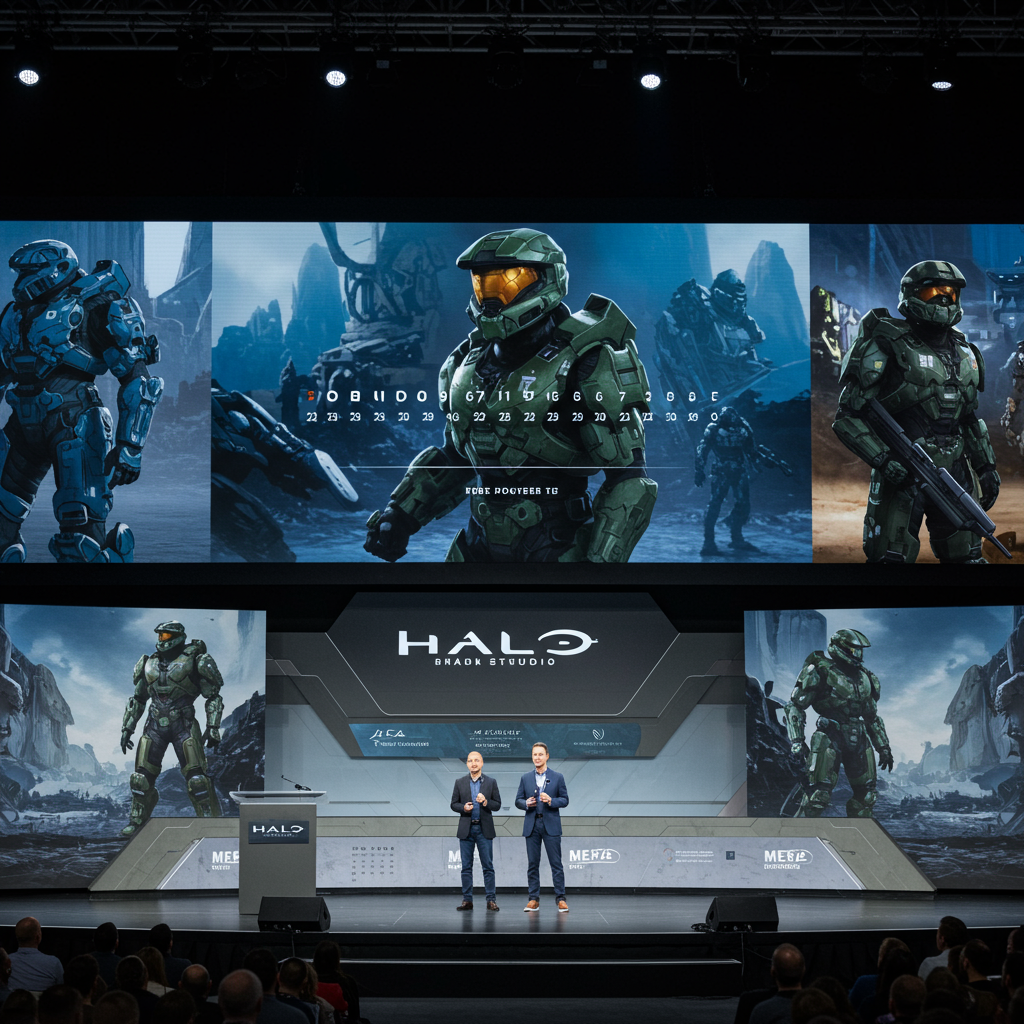Reports reveal significant challenges and immense pressure on the teams building the next installment in the long-running battlefield franchise. Following the disappointing performance of Battlefield 2042 in 2021, publisher Electronic Arts (EA) is aiming for a massive comeback, setting exceptionally high goals for the upcoming title. However, sources indicate that these ambitious plans and resulting shifts in development strategy are creating “extraordinary stress and long hours” for developers, raising concerns about both the game’s quality and the well-being of its creators.
Ambitious Goals Fuel Development Shifts
EA’s vision for the next Battlefield game, internally codenamed Glacier and often referred to by fans as Battlefield 6, is vast. The publisher aims for the title to directly challenge industry giants like Call of Duty and Fortnite. This involves targeting an unprecedented lifetime player count of 100 million – a figure vastly exceeding previous series successes like Battlefield 1 (around 30 million players) or Battlefield 2042 (22 million players by early 2024). Achieving this requires substantial investment, reportedly over $400 million, and a dramatically expanded scope.
The new game is planned to feature a mix of content types: a free-to-play battle royale mode, a dedicated single-player campaign, the series’ signature large-scale combined arms multiplayer, and the return of the sandbox-style Portal experience introduced in 2042. To tackle this multifaceted project, EA moved away from the traditional DICE-led development model, bringing in multiple support studios and new high-profile leadership from competing franchises like Call of Duty and Destiny.
New Leadership and Studio Collaborations
Significant figures were enlisted to steer the ambitious project. Byron Beede, a veteran manager from Call of Duty and Destiny, and Vince Zampella, known for his work on Call of Duty and Titanfall, were brought in to oversee the entire Battlefield series. Additionally, Marcus Lehto, a co-creator of Halo, was hired to establish and lead a new studio, Ridgeline Games, specifically tasked with developing the single-player campaign. This multi-studio approach aimed to pool talent and resources across EA.
Significant Roadblocks Emerge
Despite the influx of talent and resources, the expanded development structure quickly encountered problems. One of the most significant issues centered around the single-player campaign. Ridgeline Games, after two years of development, was ultimately closed by EA in early 2024.
Sources suggest the closure stemmed from dissatisfaction with progress, potentially exacerbated by a lack of proper check-ins and unrealistic expectations for a studio still in its foundational stages. The outcome was severe: developers reported that virtually nothing from Ridgeline’s two years of work was salvageable.
Campaign Restart and Mounting Costs
The responsibility for the campaign then fell to a collaborative effort involving DICE, Criterion Games (known for Need for Speed), and Motive Studio (developer of the Dead Space remake). This required a complete restart of the single-player mode’s development. As of spring 2025, the campaign was reportedly the only major game mode that had not yet reached an alpha state, highlighting the extensive delay and contributing to ballooning development costs.
Another source of friction has been described as cultural differences between the US-based leadership and the Stockholm-based team at DICE. Reports suggest a tension between the Swedish team’s focus on achieving the “greatest in terms of the game experience” and the US leadership’s emphasis on “financial expectations in order to be as profitable as possible.” This conflict has reportedly complicated development processes compared to past titles where DICE held primary creative control.
Compounding these issues are rigid deadlines. Developers feel that components of the game are being pushed into full production prematurely. As one employee noted, failing to fully flesh out prototypes during the pre-production phase means teams are constantly “playing catch-up” once production begins, adding pressure and potentially compromising quality.
The Human Cost of Overambition
Perhaps the most concerning consequence of these development hurdles is the severe impact on the people creating the game. The combination of sky-high performance targets, delays, inter-studio challenges, and rushed timelines is leading to “extraordinary stress and long hours” for developers across the involved studios. Burnout has become a significant issue.
Numerous employees have reportedly been forced to take leaves of absence ranging from a few weeks to several months to cope with mental exhaustion. While EA has reportedly made efforts to support its teams, some developers feel these measures are ineffective. One employee shared that seeking help within EA’s HR structure felt performative, stating, “They pretend to listen, but nobody ultimately listens. Very few changes are made on the back of it.” This suggests a disconnect between corporate efforts and the actual lived experiences of the development teams.
Industry Cautionary Tales
The challenges facing the next Battlefield echo issues seen elsewhere in the gaming industry. The recent reception of Monster Hunter Wilds provides a stark example. Despite a strong initial launch and high player counts, the game faced “Overwhelmingly Negative” reviews on Steam primarily due to a lack of substantial end-game content and significant PC performance issues – problems that can arise from rushed timelines or misaligned priorities. Players even returned to the older Monster Hunter: World in large numbers, demonstrating how quickly goodwill and player base can erode if core issues aren’t addressed or if a game feels incomplete or poorly optimized.
While the Monster Hunter Wilds developers are working to address feedback with substantial updates, including bringing back features like underwater combat and adding significant content and performance fixes, recovering from negative initial perceptions is a steep uphill battle. This situation serves as a warning for EA; launching Battlefield 6 with major issues resulting from its current development struggles could have similar long-term consequences for player trust and retention.
In contrast, studios like CD PROJEKT RED, with their approach to titles like The Witcher 4, emphasize a different philosophy: prioritizing quality over quantity and avoiding “dull busywork” fetch quests by ensuring every quest feels meaningful. This dedication, while requiring significant time and effort, builds player trust and loyalty, reinforcing the idea that “building more slowly” can ultimately lead to a more successful and sustainable product, a philosophy notably championed by Larian Studios (Baldur’s Gate 3). The Battlefield situation highlights the tension between this quality-focused approach and a business model potentially prioritizing rapid, massive growth metrics.
Looking Ahead
Given the reported state of development, many developers expect some planned features for Battlefield 6 may need to be cut or significantly delayed. The single-player campaign, in particular, is viewed by some as potentially requiring an “enormous patch on day one or early access” to meet its intended scope.
Ultimately, the report suggests that EA’s approach of attempting to “brute force” the creation of a rival to Call of Duty and Fortnite by simply throwing money and manpower at the problem is proving ineffective. Fundamental issues like miscommunication across studios, inefficient processes, and cultural disagreements are not being resolved by rigid deadlines and increased resources alone.
For the sake of both the game’s quality and, more importantly, the health and well-being of its development teams, EA needs to fundamentally change its strategy. This may involve reconsidering some of the game’s scope, allowing more realistic timelines, and focusing on establishing healthier, more effective cross-studio collaboration and project management processes. The current path is taking a heavy toll, and without significant adjustments, the human cost and potential impact on the final product remain a serious concern.
Frequently Asked Questions
What is the main issue facing the next Battlefield game’s development?
Based on recent reports, the primary issue is the “extraordinary stress and long hours” experienced by developers. This stems from EA’s highly ambitious goals for the game (aiming for 100 million players to compete with Call of Duty and Fortnite), which have led to complex multi-studio development, management changes, a campaign restart after one studio was closed, cultural clashes between teams, and rushed production timelines.
How did the campaign development for Battlefield 6 encounter problems?
The single-player campaign was initially led by a new studio, Ridgeline Games, founded by Halo co-creator Marcus Lehto. After two years, EA closed Ridgeline due to dissatisfaction with their progress. Sources indicate two years of work were largely lost, forcing development to restart under a new collaborative effort involving DICE, Criterion, and Motive studios. This restart caused significant delays and costs, with the campaign reportedly being the only mode not reaching alpha state by spring 2025.
What are the concerns about developer well-being during the creation of the new Battlefield title?
Reports highlight severe developer burnout and mental exhaustion as a direct consequence of the stressful development conditions. Employees are working exceptionally long hours, leading many to take extended leaves of absence (ranging from weeks to months). Despite some efforts by EA to provide support, developers have expressed feeling that feedback is not truly listened to and that meaningful changes to alleviate the pressure are not being implemented.




